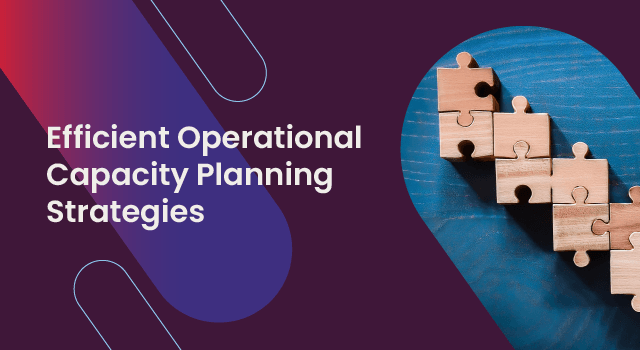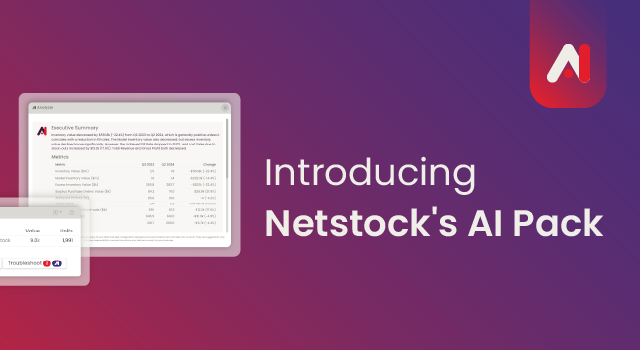If you’re managing a business in the modern world, you know how complex operations have become. Modern supply chains include global customers who order using different sales channels, and diverse supply chains complicate the system with extended time horizons and supply variability. In this environment, management control, coordination, and inter-departmental collaboration have never been more important.
Sales and Operations Planning (S&OP) simplifies modern business management and ensures that functions like sales, operations, and finance work together to support the business strategy. S&OP streamlines operations, balances supply and demand, and enhances overall performance.
Advanced AI-driven demand and supply planning solutions, like Netstock, ensure that your S&OP implementation delivers results. These systems provide real-time data and accurate forecasts to offer your business the best chance to succeed.
What is S&OP?
Sales and Operations Planning (S&OP) is a crucial business management process. It ensures that departmental plans support business objectives. The primary goal of S&OP is to balance supply with demand to support the organization’s financial and operational goals.
S&OP core objectives include:
- Balancing supply and demand: The company must meet customer demand without carrying expensive, excess stock.
- Financial alignment: Operational plans must support financial goals. All business plans must sustain long-term profitability.
- Operational efficiency: Operational plans must aim to reduce costs and inefficiencies.
- Strategic decision-making: Operational activities must support strategic goals.
Interdepartmental collaboration
Sales and operations plans foster inter-departmental collaboration and communication to integrate business functions. Each function contributes to the plan in the following ways;
- Sales and Marketing provide demand forecasts based on market conditions and customer needs.
- Supply chain managers focus on production, inventory, and logistics. They must meet demand forecasts with inventory that supports production and sales plans.
- Finance checks that the plan matches financial targets and resource allocation.
- Product Development considers future product introduction and change timelines.
A comprehensive Sales and Operations Plan will consider all departmental needs and capabilities.
S&OP benefits
S&OP should ensure efficient operations and satisfied customers. These are the main benefits of an effective S&OP:
- Balance supply and demand: S&OP creates a realistic balance between what customers want and what the company can deliver.
- Improve visibility: Increase visibility into sales, inventory, operations and finance data
- Improve communication: Cross-functional communication should improve. Silos should drop, enabling integrated business planning.
- Strategic alignment: The plan brings departments together. Different departments work toward common goals that support the long-term strategy.
- Promotes agility: Quickly review and change scenarios and analyze outcomes
The core components of a successful S&OP process
Every successful S&OP process has the following core components:
- Data gathering: Quality data is the foundation of effective S&OP. Collect accurate data from sales, marketing, production, and finance and feed it into the system. Your S&OP will use real-time data.
- Demand planning: Demand planning involves customer demand forecasts. Demand planning uses historical data, market trends, and upcoming marketing initiatives. Accurate demand planning allows supply plans to meet demand while keeping inventory lean. Sales, marketing, and product development teams collaborate to provide insights into future demand.
- Supply planning: Supply planning matches production, procurement, and inventory with your forecast demand. Proper inventory management balances inventory holding costs with the need for quick fulfillment. Supply chain and finance teams develop inventory policies to support operational and financial goals.
- Implementation and monitoring: S&OP must adapt to real-world conditions to make sure Key Performance Indicators (KPIs) are achieved.
The best way to ensure this happens is by regularly tracking performance. Ongoing evaluation will show areas for improvement and help the S&OP adapt to market demands.
The benefits of implementing an S&OP strategy
You can anticipate a range of benefits from a well-executed S&OP strategy, including:
- No more siloed working practices: S&OP encourages inter-departmental collaboration. It breaks down silos, helping teams to work towards common goals.
- Improvement in inventory management: S&OP aims to maintain optimal inventory levels. Improved forecasts make it easier to meet demand with lower stock levels. The S&OP will enhance efficiency, reduce costs, and improve cash flow.
- Better decision-making: Managers can make better decisions based on data-driven, cross-functional planning. Now department heads can make changes with full knowledge of the agreed plans.
- Increased efficiency and profitability: Organized, coordinated operations drive better resource allocation, less waste, and higher profits.
Challenges in implementing S&OP and how to overcome them
S&OP can provide significant benefits, but you may encounter challenges during implementation. Overcoming these obstacles is essential for success.
Leadership buy-in
You may find convincing leadership to invest in S&OP difficult, especially when results demand substantial investment in resources and time. Emphasize the long-term benefits of S&OP. Point out examples of how S&OP will reduce costs, optimize inventory, and improve business performance.
Cross-functional alignment
Siloed operations, where departments work independently and have conflicting goals and priorities, may hinder collaboration.
You’ll have to establish clear communication channels to encourage collaboration. Define shared goals and ensure everyone understands how they contribute to the broader S&OP plan. Regular cross-functional meetings encourage departments to work toward common goals. Training on S&OP and its impact on business success can gain commitment.
Data accuracy and integration
An effective S&OP needs accurate data. Many businesses have data silos, incomplete information, or departmental inconsistencies. Data integration may be complex and time-consuming.
Technology solutions like specialized S&OP software can ensure accurate and consistent data. Automated systems with real-time data improve integration and reliability.
S&OP best practices for continuous improvement
Use regular performance reviews to ensure that your S&OP process continues to meet organizational goals. Focus on KPIs. Identify improvement opportunities. Ensure that new plans include changed market conditions.
S&OP relies on functional collaboration. All departments must understand S&OP principles and how they affect business performance. Siloed thinking can hinder its success.
Educate teams on S&OP concepts and their role in the process. Cross-departmental training will foster a deeper understanding of how each function’s actions affect the business plan. Training helps create a unified mindset and encourages collaboration.
A critical element of an effective S&OP is its ability to prepare for disruptions or demand changes. Use scenario planning to replicate situations and understand how changes affect the business. Identify risks and develop contingency plans.
Simplify your operations with S&OP
A well-executed S&OP strategy should simplify your operations and cut costs. Unite functional heads around a common cause to drive long-term business success. A successful S&OP implementation will help you balance supply with demand and improve cross-functional communication, enabling strategic alignment. Now, you can reduce inventory holding and improve customer satisfaction for enhanced operational performance.




